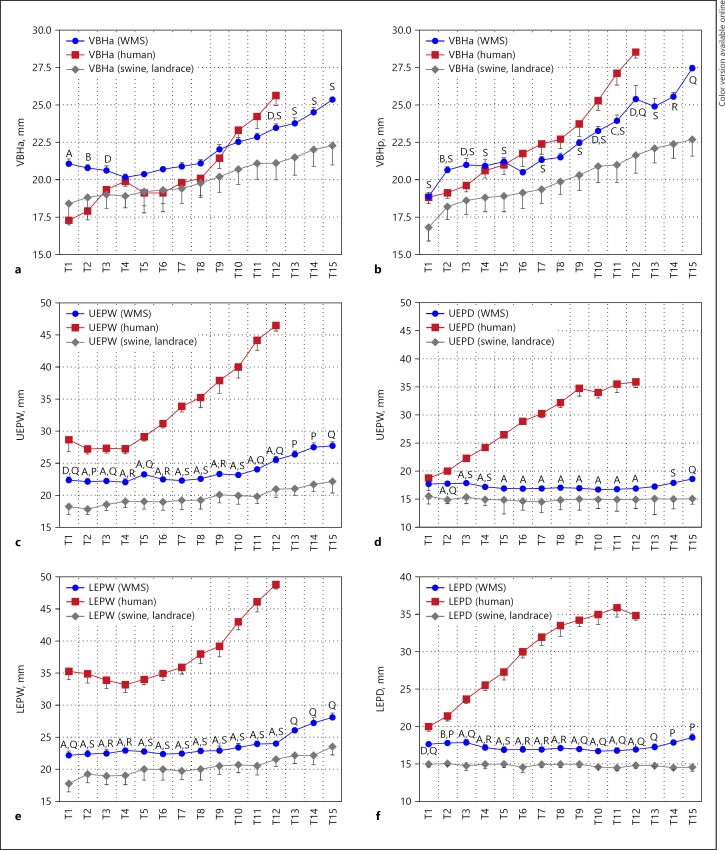Fig. 2.
Figure shows (a) vertebral body height anterior (VBHa), (b) vertebral body height posterior (VBHp), (c) upper end-plate width (UEPW), (d) upper end-plate depth (UEPD), (e) lower end-plate width (LEPW), (f) lower end-plate depth (LEPD), measurements in T1–T12 segments from spine of the Wisconsin Miniature Swine (WMS), and compared to published values [13] of spine of humans and a conventional swine breed (Landrace). Letters A–D denote statistically significant differences (p < 0.001, p < 0.005, p < 0.01, and p < 0.05, respectively) in measurements between WMS and human spines at the corresponding vertebral segment (T1–T10). Letters P–S denote statistically significant differences (p < 0.001, p < 0.005, p < 0.01, and p < 0.05 respectively) in measurements between WMS and conventional swine at the corresponding vertebral segment (T1–T12). The data are presented as mean ± SEM.

